
Our mission
Easterseals provides exceptional services, education, outreach, and advocacy so that people living with autism and other disabilities can live, learn, work and play in our communities. Easterseals has been helping individuals with disabilities and special needs, and their families, live better lives for over 90 years. From child development centers to physical rehabilitation and job training for people with disabilities, Easterseals offers a variety of services to help people with disabilities address life's challenges and achieve personal goals.
In the spotlight
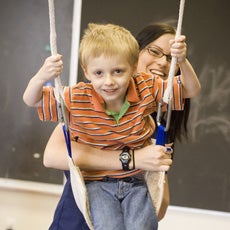
Easterseals programs across the country provide a wide variety of interventions that help individuals of all abilities, including those with Autism Spectrum Disorder (ASD). Easterseals currently has a combination of services specifically targeting individuals with the diagnosis of ASD as well as other services that include individuals with ASD among their service recipients.
Who We Are
Our blog
-
Client Spotlight: Jacqualin and the Artistic Journey with Easterseals Arkansas
Monday, February 24, 2025, 7:00 AMClient Spotlight: Jacqualin and the Artistic Journey with Easterseals Arkansas
Monday, February 24, 2025, 7:00 AM
Jacqualin's journey through the A.R.T. program at Easterseals Arkansas reveals how art can transcend…
Read this Post
At Easterseals Arkansas, we believe in empowering individuals to express themselves and thrive in creative and fulfilling ways. Today, we are excited to spotlight one of our extraordinary adults, Jacqualin, whose path through our A.R.T. program has been truly inspiring.
Jacqualin's Journey: A Story of Love, Art, and Expression
Jacqualin, diagnosed with cerebral palsy, has a personality that lights up every room she enters. While Jacqualin may not communicate with words, her infectious smile speaks volumes. Her love for art began in high school, where a dedicated teacher introduced her to the world of creativity. From that moment, art became a tool for Jacqualin to express herself and connect with others in a meaningful way.
As her mother, Michelle Edwards, shared, Jacqualin’s art is full of emotion, color, and expression. “Her artwork sends chills down my spine because it captures how she feels and her thoughts. It’s amazing to see the moods she expresses through her vibrant pieces.” For Jacqualin, the A.R.T. program at Easterseals Arkansas has given her a way to communicate what words sometimes can’t convey.
The A.R.T. Program: A Pathway to Artistic Expression
The A.R.T. program at Easterseals Arkansas allows adults with disabilities to express themselves through art. With the support of volunteers, known as "trackers," clients like Jacqualin can bring their ideas to life on canvas. Tracking involves the volunteer assisting the artist by guiding their hands, allowing them to create stunning works of art. Jacqualin’s art reflects her thoughtful approach, particularly her love for circles and patterns that are equidistant. Her unique style and attention to detail set her apart as an artist, and this year, she was honored as the featured artist for the program.
Michelle Edwards proudly shared her admiration for Jacqualin’s growth in the program, saying, “She’s very methodical in her approach to painting. She’s the only artist who ever asked me to scrap something and start over. That’s how precise and intentional she is with her work. I’m so proud of her.”
Easterseals Arkansas: A Supportive Community for Artists
The A.R.T. program is just one of the many incredible opportunities available at Easterseals Arkansas. The Center for Training and Wellness (CTW) provides a place where adults with disabilities can engage in social activities, develop life skills, and enhance their independence. Jacqualin’s participation in the A.R.T. program has not only given her an artistic outlet but also allowed her to form connections with others and build friendships along the way.
As Jacqualin continues to grow as an artist, she also benefits from the social skills and wellness programs offered at Easterseals Arkansas. Michelle shared, “It’s been wonderful for Jacqualin. Despite her disability, she has a place to go where she can be active, around friends, and doing something she loves.”
A Call to Action: Support Easterseals Arkansas and Our Artists
We are incredibly proud of Jacqualin and all that she has accomplished through Easterseals Arkansas. Her growth, both as an artist and as an individual, is a reflection of the power of creativity and support. We wish Jacqualin continued success in all her future artistic endeavors and look forward to seeing her talent continue to shine.
Easterseals Arkansas is always looking for volunteers, donors, and supporters to help us provide these transformative opportunities to individuals like Jacqualin. Your time, talent, and contributions make a difference. Whether you’re interested in volunteering as a tracker, donating to our programs, or learning more about what we do, we invite you to reach out and join our mission of empowering individuals with disabilities.
Together, we can help people like Jacqualin find their voice, celebrate their achievements, and make their mark on the world.
To learn more about Easterseals Arkansas and how you can get involved, please visit eastersealsar.com. Your support helps make dreams like Jacqualin’s possible.
The post Client Spotlight: Jacqualin and the Artistic Journey with Easterseals Arkansas appeared first on Easterseals Arkansas.
-
Employee Spotlight: Shelley Moore, Director of Curriculum and Programming at Easterseals Arkansas CTW
Friday, February 21, 2025, 12:18 PMEmployee Spotlight: Shelley Moore, Director of Curriculum and Programming at Easterseals Arkansas CTW
Friday, February 21, 2025, 12:18 PM
Meet Shelley Moore, the driving force behind Easterseals Arkansas' innovative programs at the Center…
Read this Post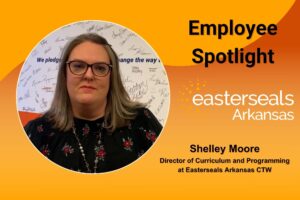
Easterseals Arkansas values its dedicated team members who enhance the lives of the individuals we serve. Today, we spotlight Shelley Moore, Director of Curriculum and Programming at the Center for Training and Wellness (CTW). With a passion for special education and years of experience, Shelley helps shape programs that make CTW a thriving environment.
Meet Shelley Moore
Shelley has dedicated her career to supporting individuals with disabilities. She earned a Bachelor’s degree in Special Education and Teaching from Ouachita Baptist University and has over two decades of experience in the field. Before joining Easterseals Arkansas, she spent 16 years as a Special Education Teacher at Cabot Public Schools. In January 2021, she became Director of Curriculum and Programming at CTW, playing a key role in expanding and improving the center’s offerings.
Transforming CTW Through Innovation
Under Shelley’s leadership, the Center for Training and Wellness has grown, offering a variety of programs for adults with disabilities. Shelley and her team continuously enhance the curriculum, creating opportunities for participants to develop life skills, express creativity, and engage in meaningful activities.
“We're excited about the new changes at CTW,” Shelley shares. “There were already great things happening, and we've worked hard to make them even better. Every day brings something exciting.”
Recent developments at CTW include:
- A fitness program where every participant rotates through a daily fitness class.
- Cooking and life skills classes that teach independence in the kitchen and household management.
- The return of the art program, where individuals create artwork with volunteer support.
Shelley credits the CTW staff’s dedication and enthusiasm for the program’s success. “Our team has embraced the changes, and their commitment makes all the difference.”
About the Center for Training and Wellness
Easterseals Arkansas’ Center for Training and Wellness helps adults with disabilities achieve greater independence and improve their quality of life. Through programs focused on health, wellness, life skills, and creative expression, CTW provides a supportive and engaging environment where participants thrive.
Learn more about CTW here: Center for Training and Wellness
Join the Easterseals Arkansas Team
We are grateful for Shelley’s leadership and the positive impact she has on CTW. Her dedication reflects the meaningful work happening at Easterseals Arkansas. If you want to make a difference in the lives of individuals with disabilities, explore our career opportunities.
Apply today: Join Our Team
The post Employee Spotlight: Shelley Moore, Director of Curriculum and Programming at Easterseals Arkansas CTW appeared first on Easterseals Arkansas.
-
Client Spotlight: Nate’s Journey with Easterseals Arkansas
Tuesday, February 18, 2025, 7:00 AM
Nate's journey with Easterseals Arkansas is a heartwarming tale of overcoming challenges and finding…
Read this Post
At Easterseals Arkansas, we are committed to supporting children and families by providing a nurturing environment where they can grow, learn, and thrive. Every child’s experience is unique, and today, we are honored to share Nate’s story—a resilient and loving young man who found his voice with the help of Easterseals Academy at Riverdale.
Nate’s Progress: Overcoming Challenges with Love and Support
Nate is a sweet and affectionate young man who loves to eat, prepare his own food, garden, play in the water, and share warm hugs. However, life brought big changes—his older sisters left for college, his family situation shifted, and he and his mother, Stacey, moved to a new place. These transitions left Nate feeling lost and withdrawn, making it difficult for him to express his emotions.
When Nate first arrived at Easterseals Academy, he hesitated to even step inside the building. Overwhelmed and unsure of his surroundings, he struggled to connect. Stacey recalls how he would stay outside for hours, unable to adjust. Everything changed when Madeline, one of the dedicated staff members, introduced Nate to a new way of communicating—the Picture Exchange Communication System (PECS).
A Breakthrough Moment
The turning point came when Madeline presented Nate with two pictures—one of an iPad and one of a snack. Given this simple choice, Nate selected the snack, marking the first time he willingly walked through the doors of Easterseals Academy. From that moment on, he began to engage and express himself in ways he never had before.
Through PECS (Picture Exchange Communication System), Nate started by exchanging a single laminated picture card for an item he wanted. As he progressed, his vocabulary grew into a massive binder filled with hundreds of words, eventually leading to the use of a communication device. With this newfound ability to express himself, his frustration and challenging behaviors diminished. No longer did he lie on the floor or throw tantrums—he had finally found his voice.
The Impact of Easterseals Academy at Riverdale
Easterseals Academy at Riverdale provides a specialized learning environment for children with developmental disabilities, helping them reach their full potential. The Academy focuses on individualized instruction, promoting communication, independence, and academic growth. For Nate, this supportive atmosphere made all the difference. The staff met him with patience, care, and the tools he needed to succeed.
“They met Nate right where he was—hurting, anxious, and hesitant to connect with people,” Stacey shares. “As soon as he realized that people here were willing to love him as he was and help him grow, he was all in.”
Looking Ahead
Today, Nate is thriving in ways his mother once only dreamed of. The support and resources provided by Easterseals Arkansas have given her hope for the future, knowing that Nate has the tools he needs to continue growing and learning.
“Easterseals has given me hope,” Stacey says. “Every dollar that goes to Easterseals helps a child who truly needs it, and that child will go on to do amazing things in life.”
We are incredibly proud of Nate’s progress and excited to see all the wonderful things he will accomplish. If you or someone you know could benefit from the services at Easterseals Arkansas, we encourage you to reach out. Every child deserves the opportunity to communicate, learn, and thrive, just like Nate.
Learn more about Easterseals Arkansas and how you can support children like Nate at Easterseals Arkansas.
The post Client Spotlight: Nate’s Journey with Easterseals Arkansas appeared first on Easterseals Arkansas.
-
Employee Spotlight: Dr. Deborah Grimmett, CRC’s Education Manager at Easterseals Arkansas
Thursday, February 13, 2025, 3:59 PMEmployee Spotlight: Dr. Deborah Grimmett, CRC’s Education Manager at Easterseals Arkansas
Thursday, February 13, 2025, 3:59 PM
Meet Dr. Deborah Grimmett, the heart of Easterseals Arkansas' educational program. With her extensiv…
Read this Post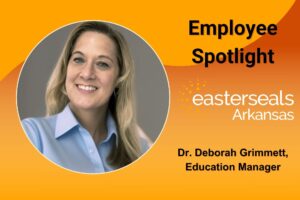
Easterseals Arkansas recognizes the dedicated professionals who drive our mission forward. Today, we highlight Dr. Deborah "Debbie" Grimmett, our experienced and committed Education Manager at the Children's Rehabilitation Center. Her leadership in special education fosters an environment where both students and staff thrive at our inpatient rehab center.
Meet Dr. Deborah Grimmett
Debbie brings extensive knowledge and experience. She holds a Doctorate of Education in Educational Leadership and Administration from Liberty University, along with multiple degrees in special and elementary education. Her career has been dedicated to creating inclusive and supportive learning environments.
As the Education Manager, she plans, organizes, and supervises educational strategies while ensuring curriculum resources are well-developed. She also oversees daily operations and recruits, hires, and trains special education teachers and paraprofessionals, equipping them to meet each student’s unique needs.
A Mission-Driven Approach to Education
For Debbie, this is more than a school—it’s a place of support, innovation, and teamwork. “Our teachers are the heart and soul of this mission,” she says. She values being part of a professional, student-centered environment where every decision is made with the children's best interests in mind.
One of the most rewarding aspects of her role is focusing entirely on students without the paperwork burdens often found in public schools. “We get to focus on our passion and spend the entire day with our kids,” she explains. This approach ensures that each child’s needs are met with care, creativity, and individualized attention.
Debbie also appreciates the collaborative and supportive culture. “The first thing I felt when I arrived was the teamwork and camaraderie. I’ve never heard anyone say, ‘That’s not my job.’ Instead, I hear, ‘What do you need? How can I help?’” This culture of mutual support extends beyond the classroom, fostering an environment where staff uplift each other just as much as they support their students.
Join the Easterseals Arkansas Team
Debbie’s passion for her work is evident: “It’s hard not to love this. Come do what you love because here, you actually get to do it.”
We seek dedicated professionals who share our mission of empowering children with disabilities. If you’re looking for a fulfilling career where you can make a meaningful difference, explore our career opportunities. Visit Easterseals Arkansas Careers to learn more and apply today.
The post Employee Spotlight: Dr. Deborah Grimmett, CRC’s Education Manager at Easterseals Arkansas appeared first on Easterseals Arkansas.
-
Inclusive Classroom Strategies to Support Diverse Learners
Tuesday, January 28, 2025, 5:00 AM
Discover how to implement inclusive classroom strategies that support diverse learners and foster a …
Read this Post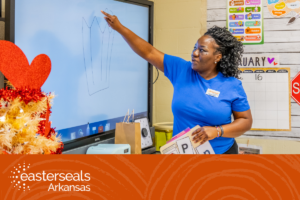
Creating an inclusive classroom for students with intellectual and developmental disabilities, including those with Down syndrome, requires intentional and evidence-based strategies. It’s not simply about including everyone—it’s about ensuring that each student feels genuinely supported, valued, and empowered to succeed. In this guide, you’ll learn how to effectively implement inclusive classroom strategies that promote connection, belonging, and growth for all learners. From cultivating a sense of community to designing adaptable assessments, these practical approaches will help you create an environment where every student can thrive.
Key Takeaways:
- Create an inclusive classroom by building belonging, using names, fostering group discussions, and offering student choice.
- Provide accessible materials via varied formats (videos, text, audio), use UDL principles, and ensure digital access (e.g., readable PDFs, video captions).
- Use multiple assessment forms (projects, presentations) and adapt assessments (extra time, oral tests) to fit individual needs.
- Differentiate instruction through tailored methods, flexible grouping, and collaboration without isolating students.
- Support special needs students by adjusting lessons (extra time, assistive tech) and collaborating with support staff on IEPs.
- Promote inclusivity through clear rules, positive peer interactions, and cooperative learning (group roles, peer tutoring).
- Use adaptive technology like speech-to-text tools, integrating it consistently for everyday classroom tasks.
Creating An Inclusive Learning Environment
Creating an inclusive learning environment means everyone feels they belong and can learn. Here are practical strategies that work.
Fostering a Sense of Belonging
Inclusive classroom strategies focus on creating a learning environment where every student feels valued and connected. Start by getting to know your students—their names, interests, and strengths—to build trust and foster a sense of belonging. Incorporate group activities to encourage interaction and help students form friendships, boosting their comfort and confidence. Class discussions where all voices are encouraged and respected ensure that every student feels heard and included. Offering choice and flexibility, such as letting students select projects or books based on their interests, empowers them and reinforces their sense of value within the classroom. Finally, cultivate a welcoming classroom culture by promoting kindness, respect, and positive reinforcement to make every student feel supported and included.
Making Classroom Materials Accessible
Ensure the classroom resources fit different needs. Use varied materials like videos, texts, and images to reach all learners. Some students may need read-aloud tools, while others benefit from visual aids. If using written materials, provide options on audio formats or larger font sizes. This lets both students with disabilities and those without do their best.
In digital learning environments, offering materials in several formats helps too. Ensure that PDFs are readable by screen readers, and captions are included for videos. Universal Design for Learning (UDL) principles guide teachers to design lessons that work for everyone. You can find more information on assistive technology here.
Inclusive Assessments to Gauge Student Progress
Firstly, assess student growth in ways beyond tests and quizzes. Use multiple forms of assessment like projects, presentations, and journals. This method evaluates a student’s knowledge in ways they can succeed, not just traditional formats. Mock trials, portfolios, and peer reviews allow students to show what they know in creative ways.
Make sure assessments aren't one-size-fits-all. If a student needs extra time or a quiet space, offer it. Some may need oral assessments instead of written ones. The goal is to see their learning, not their test-taking ability.
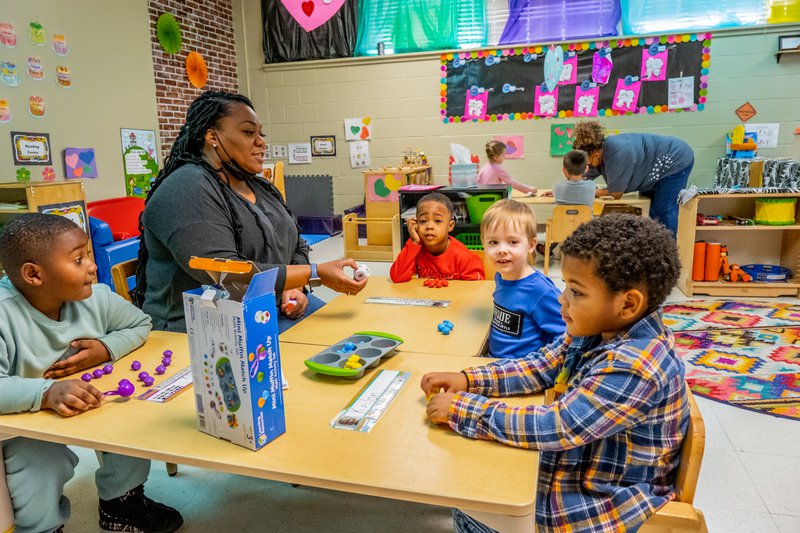
Effective Inclusive Classroom Strategies
Tailoring Instruction to Diverse Student Needs
Inclusive classroom strategies are essential for tailoring instruction to meet the diverse needs of students. Effective differentiation begins with understanding how each student learns best and adapting lessons to match their strengths. Visual aids, hands-on activities, and offering choices in assignments or reading materials are just a few ways to help all learners feel supported and included. These strategies ensure tasks are both challenging and achievable for every student.
Incorporating special education into general classroom settings is another vital component of inclusive classroom strategies. Adapting lessons for students with special needs—such as adjusting the pace, breaking tasks into smaller steps, or providing regular check-ins—helps integrate and support these learners without isolating them. By focusing on flexibility, feedback, and individual strengths, inclusive classroom strategies create an environment where all students can thrive.
Implementing Flexible Grouping for Differentiation
In an inclusive classroom, flexible grouping can support learners by allowing them to work together in ways that maximize their strengths. By rotating groups or forming them based on the task type, we can create opportunities for students of various abilities to collaborate. Sometimes, it might make sense to group students with similar learning levels, while in other instances, mixed-ability groups can promote peer learning.
Teachers may also rely on group projects or guided discussions where students help each other, learn from different perspectives, and develop social skills. Differentiated instruction methods like these benefit not only those who struggle but also high-achieving students by allowing them to teach and learn in new ways.
Special Needs Inclusive Classroom Strategies
Supporting students with special needs takes careful planning and collaboration. From adapting lessons to working with staff, there are ways to make sure every student gets what they need to succeed.
Adapting Instructional Strategies for Different Disabilities
Inclusive classroom strategies are key when adapting instructional methods for students with different disabilities. The first step is understanding each student’s unique needs, as no single approach works for everyone. For example, students with autism may benefit from visual supports, while those with dyslexia might thrive with tools like audiobooks or text-to-speech software. Simple adjustments—such as providing written instructions, using images, or allowing extra time—can have a significant impact on their learning experience.
These also involve addressing physical accessibility. For students with physical impairments, it’s important to maintain clear pathways and ensure all necessary tools are within reach. Allowing additional time for transitions or incorporating breaks can reduce stress and support their participation. Assistive technology, like voice-to-text software or listening devices, can further enhance engagement and inclusion. By focusing on these strategies, you can create a classroom environment where every student feels supported and empowered.
Collaborating with Support Staff to Meet IEP Goals
An important part of helping students with special needs is also working with support staff. Each student with special needs will have an Individualized Education Program (IEP). This is a legal document that lists specific goals for the student’s learning and how to achieve them. You won’t be expected to write or carry out an IEP alone. Special education teachers, speech therapists, and other professionals are there to assist you. The goal is to work as a team.
Regular meetings with these professionals help everyone stay on track with the student’s progress. Sharing insights from the classroom with the support staff allows everyone to adjust strategies if needed. For example, if a student is struggling with reading tasks even after initial support, the team can suggest other accommodations, like pairing the student with a reading buddy.
You also need to keep an open line of communication with the student’s family. They know their child best, and their input will help you understand what works at home and what strategies could transfer to the classroom. Keep written records of any major changes or adjustments so that everyone stays informed and working toward the same goal.
By teaming up, staying flexible, and individualizing your approach, you can create a great learning environment for all students, including those with special needs.
Inclusive Classroom Management Strategies
Establishing Clear Inclusive Classroom Rules and Expectations
Setting clear and fair rules is key to classroom management for inclusivity. To begin with, students should know what behavior is expected and how they can contribute to a respectful environment. In addition, clear rules create a space where everyone feels valued and safe. For example, inclusive classroom management strategies, like involving students in rule-setting, can motivate students to follow the guidelines. As a result, they know their voice matters, which, in turn, boosts engagement. Ultimately, these strategies help foster a positive and inclusive classroom atmosphere.. When students know what to expect, they feel more comfortable participating, and the entire class benefits from reduced confusion and conflict.
One effective way to maintain clarity and fairness is by displaying the rules in multiple formats. Use visuals and simple language to ensure all students understand. You can also offer verbal reminders to reinforce the rules. It’s crucial that the rules promote diversity and respect, so statements emphasizing kindness, listening, and flexibility are important for fostering inclusion.
Encouraging Positive Peer Interactions
A classroom thrives on positive student interactions. These relationships promote diversity in classroom settings because students from different backgrounds learn to appreciate and understand one another. Encourage activities that get students to work together, like group discussions or partnerships. For example, “peer praise” exercises—where students give compliments to each other—can build trust and community.
It’s important to model respectful interactions as the teacher. When conflicts arise between students, don’t just call it out; use it as a learning moment. Guide them to talk through their disagreements and understand each other’s perspectives. Direct interaction can dissolve biases or assumptions, making the classroom a more welcoming environment for everyone.
You may want to use structured activities that show students how to listen better and collaborate respectfully. Techniques like structured turn-taking ensure every voice is heard. This turns inclusivity from an idea into everyday practice. By routinely encouraging responsible peer engagement, you create pathways for every student to feel like they truly belong.
Applying Cooperative Learning Techniques
Group Work Strategies for Mixed-Ability Classrooms
In a classroom with students of different abilities, group work can be a powerful tool. It helps everyone learn by using what each student does well. To make group work fair and helpful, try creating small groups that mix skills. For example, pairing students with different strengths means they can help each other. You might choose to design tasks that can be broken into parts so that everyone contributes, regardless of skill level. Measuring success by how well the group works together — not just individual work — promotes teamwork and shared responsibility. It’s also important to set guidelines for respectful interaction, encouraging students to listen to one another.
Designating tasks for students is one of the more subtle but effective inclusive classroom strategies. When roles are clearly assigned, group work can become more meaningful. You could assign roles like note-taker, time-keeper, or presenter, making sure each role matches the particular student’s strengths. By rotating roles, all students get the chance to experience new responsibilities. This shifts the focus from individual accomplishment to group cooperation, allowing struggling learners to gain confidence through group support. It’s a win-win, as everyone benefits from working together, and students learn that they have valuable contributions to offer.
Using Peer Tutors to Enhance Inclusivity
Peer tutoring is another excellent strategy that embraces inclusivity. By allowing students to teach each other, you permit learners to connect in ways they couldn’t during regular teacher-student instruction. For example, a student who understands the material can help a student who is struggling. This gives the tutoring student a chance to deepen their own understanding while giving the struggling student extra help. Both students gain confidence from the experience.
One way to introduce peer tutoring is by rotating partners within the classroom. This helps make clear that everyone has strengths they can share. Be sure to monitor the sessions carefully to ensure they remain positive and safe for all students. Sometimes, assigning students to reflect on their tutoring experience can help them see how much they've learned — both academically and socially. When students feel they can rely on one another for support, a sense of community and belonging is strengthened.
Adaptive Technology & Inclusive Classroom Strategies
Adaptive technology is a crucial tool in inclusive classrooms. It helps bridge gaps for students who face learning challenges. Whether we talk about physical disabilities or learning issues, adaptive technology ensures everyone can participate fully. So, selecting the right tools matters a lot.
Selecting the Right Assistive Technology Tools
When choosing assistive technology, you'll want to think about each student's needs. Some may benefit from speech-to-text tools, while others may excel with screen readers. Make sure the tools are easy to use and support the student's learning style. Resources like tablets with text magnifiers or specialized keyboards can change how a student learns. You should also consider consulting a specialist to find the best option for the specific learning challenges. Yale offers a resource on teaching workshops for those seeking more information.
Integrating Adaptive Technology Into Daily Lessons
Once you’ve got the right tools, the next step is to use them consistently in everyday lessons. Start small by including tools in reading or writing tasks. Gradually, you can expand their use for group projects or presentations. This practice makes sure that technology doesn’t feel separate from learning but becomes part of how students succeed daily. Collaboration is key; work with your school's IT support team to train both students and teachers. Keep in mind that adaptive technology is most helpful when integrated, not just added as an extra.
Creating an inclusive learning environment means making sure every student feels valued, understood, and supported. From fostering belonging and adapting materials to using flexible assessments and cooperative learning, inclusivity touches all aspects of the classroom. The goal is to meet diverse needs while promoting engagement and growth. By using adaptive technology, clear classroom rules, and thoughtful differentiation, you can equip students with special needs to thrive. Embrace these strategies and give every learner the chance to succeed—because diversity strengthens education for everyone.
Let Easterseals Arkansas Guide the Way
Looking for more tips and resources to create an inclusive classroom? Visit Easterseals Arkansas online for expert guidance, tools, and strategies to support all learners. Together, we can make every classroom a place where every student feels valued and empowered.
The post Inclusive Classroom Strategies to Support Diverse Learners appeared first on Easterseals Arkansas.
Let's Keep in Touch
Don't miss out on exciting news, helpful resources, and impactful stories delivered to your inbox each month.
Join Today




